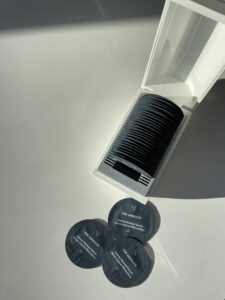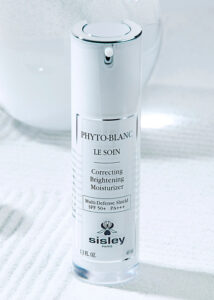
In the gentle radiance of blooming motherhood, a woman prepares not simply to welcome new life but also to undergo a profound transformation. It is a period where each new dawn signals growth and metamorphosis. This is the narrative of maternal skincare, in which the delicate experiences of both prenatal and postnatal care are interlaced into a continuous fabric of enduring attention.
The act of nurturing the skin evolves into a demonstration of love—a soft discourse shared between mother and offspring, reinforced by the vigilant care afforded throughout these transformative months. Women navigate the flux of hormonal variations and the physical changes that accompany the genesis of life’s new chapter.
Amidst these changes, the steadfastness of a skincare regimen stands as evidence of tenacity. It’s a voyage of self-discovery and devotion, where beauty rituals performed in peaceful reflection underscore the inherent cadence of life itself—from the moment before birth’s promise to the gentle days that succeed it.
In the ensuing sections, we shall unearth the core of persistence—how skincare routines evolve and adjust from the luminescence of pregnancy to the gentle recuperation of the postpartum period. This approach to skincare, ageless by nature, exalts the splendour of motherhood at every juncture, guaranteeing that each mother may personify the lustre so rightfully hers.
Optimum nutrition is paramount in sustaining the health and elasticity of the skin, especially amidst the journey of pregnancy and the postnatal period. Omega-3 fatty acids are fundamental to maintaining the skin’s lipid barrier, aiding in the prevention of dryness and bolstering elasticity. These beneficial fats are plentiful in oily fish such as salmon, and in plant sources like chia seeds and flaxseeds. Vitamins A, C, and E are also significant contributors to skin renewal and defence. Vitamin A enhances cell turnover, vitamin C is instrumental in the synthesis of collagen and provides antioxidant protection, whilst vitamin E guards cell membranes against oxidative harm.
Vegetables of the cruciferous family, including broccoli and kale, as well as an array of vibrant berries, abound with antioxidants that neutralise damaging free radicals and assuage inflammation. These vital nutrients preserve cellular integrity, ensuring that the skin remains robust and luminous throughout the hormonal fluxes and corporeal alterations of pregnancy.
The Importance of Hydration for Skin Health
Adequate hydration is crucial for ensuring the skin stays plump, supple, and overall healthy. Water facilitates the transportation of nutrients to the skin cells and assists in the expulsion of toxins. Maintaining proper hydration levels also serves to lessen the appearance of fine lines and fortifies the skin’s natural barrier function—particularly essential during pregnancy, when the skin may exhibit increased dryness and sensitivity. During this pivotal time, hydration is not only a pragmatic necessity but also a vital practice in upholding the vitality of maternal skin.
Synergy Between Diet and Skincare Regimens
Marrying a diet abundant in nutrients with judiciously chosen skincare products cultivates a synergistic approach to maternal skincare. Enhanced sensitivity during pregnancy and the postpartum phase demands products with gentle, non-toxic ingredients. Numerous esteemed skincare brands proffer formulations that are safe for use during pregnancy, enhanced with botanical extracts, ceramides, and natural oils that are harmonious with the evolving needs of the skin.
This unified strategy forges a concordant relationship between internal nourishment and external skincare. By giving equal importance to dietary health and customised skincare, a holistic strategy for preserving and augmenting skin health is achieved. This comprehensive approach bolsters the skin’s resilience, enabling graceful adaptation to the requisites of motherhood while sustaining its inherent vitality and radiance.
The journey through pregnancy and postpartum brings with it specific dermatological conditions, largely due to hormonal changes and physical expansion of the skin. A scientific understanding of these changes is essential to developing effective skincare routines for both prenatal and postnatal phases.
Hormonal Fluctuations: Acne and Melasma An increase in hormones like estrogen and progesterone during pregnancy can lead to an overproduction of sebum, resulting in acne. These hormonal shifts can also stimulate melanocytes, the skin cells responsible for pigmentation, causing melasma—characterized by dark, irregular patches commonly occurring on the face.
Skin Elasticity and Stretch Marks The stretching of the skin to accommodate a growing fetus exerts stress on the dermal and epidermal layers, leading to stretch marks, or striae gravidarum. This condition is marked by an initial inflammation and later tissue atrophy, showing as discolored streaks on the abdomen, breasts, and thighs.
Postpartum Skin Recovery Following childbirth, the skin must adapt as hormone levels normalize and the body returns to its pre-pregnancy state. During this period, concerns such as loss of elasticity and persistent hyperpigmentation can be prominent. Skin recovery efforts focus on promoting collagen synthesis and enhancing the skin’s natural barrier function.
Postnatal Skin Convalescence
In addressing these conditions, the use of targeted, scientifically-formulated skincare products can provide essential support. For acne, non-comedogenic and anti-inflammatory ingredients are key, while melasma may benefit from topical agents that regulate pigment production. To improve skin elasticity and address stretch marks, products rich in peptides and hydrating compounds should be utilized. Additionally, restoration of the skin postpartum can be aided by using products that encourage cellular turnover and barrier repair. Through this lens, selecting skincare products with evidence-based formulations becomes a strategic aspect of maternal skincare, with the aim to mitigate common skin issues safely and effectively during and after pregnancy.
The passage through pregnancy and the postnatal era is accompanied by distinct dermatological concerns, often precipitated by hormonal fluctuations and the physical enlargement of the skin. A robust scientific comprehension of these alterations is indispensable for devising skincare routines that are efficacious in both prenatal and postnatal stages.
In the delicate dance of maternity, where skin becomes a shrine of the sacred journey of life, it is as crucial to recognize the ingredients to sidestep as it is to embrace those that nourish and protect. As guardians of both prenatal and postnatal well-being, an informed discernment of skincare formulations is paramount, for the safety of mother and child alike stands at the fore.
Leading the vanguard of ingredients to avoid is a family known for its anti-aging prowess—retinoids. Though coveted for their ability to renew and reduce the signs of aging, retinoids are advised against during pregnancy and while breastfeeding due to the potential risk of harm to the developing baby. This pause in use extends from prescription medications to over-the-counter retinol creams, ensuring a sanctuary of safety envelops each trimester and beyond.
Salicylic acid, celebrated for its exfoliating qualities and blemish control, must be approached with caution during maternity. High-dose salicylic acid treatments, particularly oral medications, are best reserved for times away from pregnancy and nursing. However, occasional, light topical use, such as in cleansers or toners, may be considered safe; still, it behooves the vigilant mother to consult with her healthcare provider before continuing use.
The quest for even skin tone often sees the use of hydroquinone, yet during the stretches of pregnancy and breastfeeding, it is an ingredient best left untouched. Its high absorption rate raises concerns, and as clarity in maternal skincare is as much about ingredient choice as it is about complexion, hydroquinone is best substituted for safer alternatives that promise luminosity without compromise.
With the myriad of essential oils and fragrances gracing numerous skincare products, discernment must be applied. Certain essential oils, notably rosemary, clary sage, and others, may pose risks during pregnancy and should be artfully avoided or used with a professional’s guidance. Similarly, fragrances may lead to increased skin sensitivity and should be considered carefully, especially when the skin is in the throes of hormonal transformation.
Navigating the opulence of skincare throughout motherhood’s voyage means cultivating an awareness of what must be foregone, albeit temporarily. In embracing alternatives that enrich without endangering, mothers carve a sanctuary of health and beauty—free from worry, filled with wonder—for themselves and their precious cargo. This informed approach to skincare ingredients assures peace of mind, allowing the focus to rest solely on the joyous epochs of pregnancy and the tender new beginnings that follow.
As we traverse the delicate journey from pregnancy’s first glow to the cradle of postnatal recovery, the alchemy of skincare evolves, calling forth a quartet of luxury guardians designed to protect, nourish, and celebrate the maternal skin at every turn. Each product, steeped in sumptuous care, plays its unique part in this harmonious suite that accompanies mothers through both prenatal and postnatal passages.
Noble Panacea- The Absolute Intense Renewal Serum.
This extraordinary concoction is a paean to the potency of pure, potent ingredients, devised under the aegis of Nobel Prize-winning science. It is a serum that bespeaks rejuvenation and skin vitality, blessed with the brand’s OSMV™ technology, replete with a cornucopia of antioxidants, peptides, and restorative extracts, works in unison to fortify the skin barrier, diminish the heralds of stress, and imbue the complexion with a luminous, vivacious quality.

111Skin Vitamin C Brightening Booster:
An ally to ward off the specters of uneven tone and the fatigue of swift transformations. Its assemblage of antioxidants and vitamin C illuminates the complexion with the subtlety of morning sunlight, providing an even, glowing canvas throughout prenatal development and postnatal rejuvenation alike.

Cellcosmet CellEctive Range:
Cellcosmet CellEctive Range heralds a new epoch of anti-aging sophistication. Imbued with the power to revive and replenish, this line stands as a monument to the mother’s enduring beauty. Its formulation considers the tender state of pregnancy, while post-birth, it focuses on revitalizing a complexion craving the return to its former verve.

Sisley Paris Phyto-Blanc Moisturizer SPF 50+:
A Shield of Splendor that combines the might of sun protection with a brightening prowess. This multi-action cream serves as a formidable shield against the elements for the prenatal skincare warrior and a restorative balm for the postnatal maven, ensuring that skin remains untarnished by the passage of time and enriched by the touch of luxury.
These selections comprise the pinnacle of maternal skincare—a cohesive retinue that relaxes the boundaries between prenatal and postnatal needs, offering a consistent thread of luxury and care that runs through the entire maternity experience. Embrace these offerings as a testament to undying care, and an ode to the strength and beauty of motherhood in every phase.

For mothers navigating the intricacies of prenatal and postnatal skincare, there are scientifically-backed treatments specifically designed to address common skin concerns during these transformative periods. Below are three top recommended options that blend efficacy with safety, ensuring the mother’s well-being is at the forefront.
Gentle Chemical Peels: Balancing and Rejuvenating
Mild chemical peels using alpha hydroxy acids (AHAs) like glycolic or lactic acid offer a gentle solution for exfoliating the skin, promoting cell turnover, and improving texture. They can help mitigate the dullness and uneven pigmentation that may arise due to hormonal fluctuations. These peels can be carefully adjusted to a strength that’s effective yet safe for pregnant and nursing mothers, conferring a refreshed and renewed complexion.
LED Light Therapy: Soothing and Repairing
LED light therapy presents a non-invasive and painless option for addressing various skin issues, including acne and hyperpigmentation, without the use of chemicals. Blue LED light targets acne-causing bacteria, while red LED light encourages collagen production and reduces inflammation, aiding in the skin’s recovery and maintenance of elasticity both during and after pregnancy.
Hydration Infusions: Nourishing Deeply
Hydration infusions involve non-invasive techniques to enrich the skin with a surge of moisture and nutrients. Treatments such as oxygen infusion or hydradermabrasion deliver a combination of hyaluronic acid, vitamins, and antioxidants directly to the skin. These treatments can alleviate dryness, enhance barrier function, and leave the skin plump and radiant, catering to the specific needs of maternal skin undergoing constant change.
These treatments offer comforting and effective solutions for mothers-to-be and new mothers alike, providing the care and attention that maternal skin deserves. As with any cosmetic procedure, consultation with a healthcare provider or dermatologist is crucial to ensure each treatment aligns with the individual needs and safety considerations of prenatal and postnatal care.
As we draw the veil of serenity over our foray into maternal skincare, we are reminded of the profound grace that adorns each stage of this cherished journey. Motherhood, with its gentle ebb and flow of transformation, invites a woman to not only create and sustain life but to also uphold a tapestry of self-care that reflects the love and light she extends to her newborn.
In the quiet and sacred sanctuary of maternity, a detailed and gentle skincare regimen unfurls, whispering promises of continuity—where each application of cleanser or serum transcends routine to become a ritual. These moments of meditative beauty are as much about nourishing the skin as they are about reaffirming a mother’s devotion to her own well-being, honoring her skin as it shifts in tandem with life’s tender melody.
Yet, this assurance in skincare speaks to a larger narrative—one that reveres a mother’s resilience and celebrates her unwavering spirit. It is the acknowledgment that, amid the nocturnes of midnight feedings and the lullabies of nap-filled afternoons, her commitment to her skin’s longevity is a profound act of self-respect and a testament to her undiminished elegance.
Let this collection of insights and recommendations be an ode to maternal magnificence—a chorus of support that stands in solidarity with every mother carving out a moment for herself within the sacred odyssey of motherhood. Just as she cradles her child in arms of tenderness, so too does she deserve to envelop her skin in a cloak of mindful care, weaving a legacy of beauty that will echo through the whispers of nurturing and the strength of her loving embrace.
Date:
21/12/2023
Category:
Article